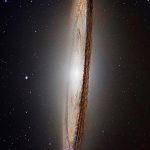Key Takeaways:
- Blue jets, a fascinating and elusive form of lightning, have been captured by instruments aboard the International Space Station (ISS) for the first time.
- These lightning phenomena zip upward from thunderclouds into the stratosphere, reaching astonishing altitudes of up to 50 kilometers in less than a second.
- Blue jets primarily excite stratospheric nitrogen, creating their distinctive blue hue, setting them apart from ordinary lightning.
- Understanding these upper-atmosphere events is crucial, as they can impact radio wave communication technologies.
- The spark that triggers a blue jet may result from short-range electric discharges within a thundercloud, causing powerful bursts of electric current.
Scientists have long been intrigued by the mysterious blue jets, a rare form of lightning that extends from thunderclouds into the stratosphere at incredible speeds. While these phenomena have been observed from the ground and aircraft, comprehending their formation has remained challenging without getting high above the clouds. However, a breakthrough came when cameras and light-sensing instruments on the ISS spotted a blue jet emerging from an intense, fleeting burst of electricity near the top of a thundercloud. The event occurred during a storm over the Pacific Ocean, near the island of Nauru, in February 2019.
The process leading to the blue jet starts with a brief 10-microsecond flash of bright blue light near the top of the cloud, approximately 16 kilometers high. From this flashpoint, a blue jet shoots upwards into the stratosphere, climbing to about 52 kilometers over several hundred milliseconds. These blue jets are distinct from typical lightning as they primarily excite stratospheric nitrogen, giving them their unique blue coloration.
Understanding blue jets and other atmospheric phenomena associated with thunderstorms, such as sprites and elves, holds significant importance due to their potential impact on radio wave communication technologies. These upper-atmosphere events can disrupt the transmission of radio waves through the air. Consequently, researchers are keen to explore the formation and behavior of these lightning events to enhance our knowledge of atmospheric electricity.
The spark that initiates a blue jet may result from a particular type of short-range electric discharge within the thundercloud. Unlike regular lightning bolts that form between oppositely charged regions of a cloud, these short-range discharges occur when turbulent mixing brings oppositely charged regions within about a kilometer of each other. This close proximity generates powerful bursts of electric current, which is believed to be the trigger for blue jets. Ground-based antennas have detected evidence of such high-energy, short-range discharges in the form of pulses of radio waves from thunderstorms.
The breakthrough in capturing blue jets from the ISS not only provides fascinating visual evidence of these rare lightning phenomena but also brings researchers a step closer to understanding their origins and potential impact on our communication technologies. As scientists continue to explore and analyze these upper-atmosphere events, their findings could lead to advancements in our comprehension of atmospheric electricity and space weather phenomena.
Read full article on Science News


